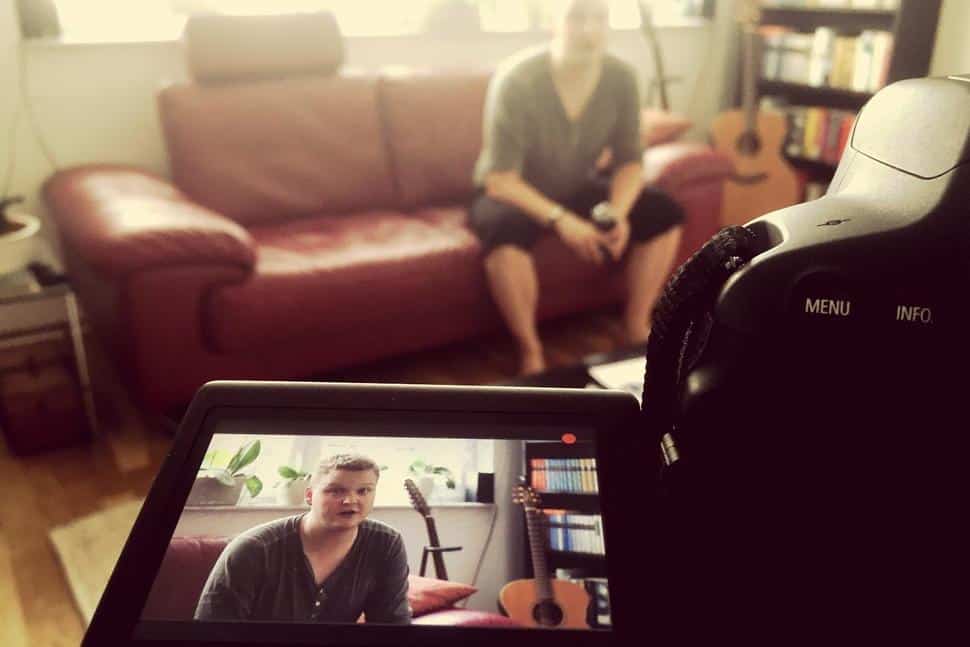
FOR CHRIS PREKSTA, co-launching the now-popular YouTube show “Pittsburgh Dad” was a “happy accident.” In 2011, Preksta filmed his co-creator Curt Wootton performing an amusing impression of his father’s Pittsburgh-inflected accent, and the pair edited it to look like a family sitcom. They uploaded it to YouTube, primarily to share with their own families. But soon, the video was receiving tens of thousands of views and gaining coverage on local media stations.
Today, the digital series has amassed nearly 47 million views on YouTube, plus 57 million on Facebook, and allowed Preksta and Wootton to quit their day jobs. They diversify the money made from YouTube ad-sharing with merchandise sales, appearances and sponsorship deals, including one from local favorite Iron City Brewing Company.
“I think this is a big reason why this particular show went off is it wasn’t some broad comedy to reach the entire country,” Preksta says. “It felt custom-made for the city of Pittsburgh.”
For people who dream of making money on YouTube, there are lots of online celebrities and channels to aspire to imitate. There’s makeup superstar James Charles, who became the first male CoverGirl model. Liza Koshy’s fame on Vine and then YouTube has led to traditional film and TV gigs, including a role in a Tyler Perry film. Even pop star Justin Bieber got his start on YouTube. According to YouTube, the number of channels that earned five figures or more grew by more than 50 percent from July 2017 to July 2018. Channels earning six figures per year increased by 40 percent.
But recent research has painted another picture. Scoring a place in the top 3 percent of most-viewed channels could bring in ad revenues of just $16,800 per year, according to analysis for Bloomberg News by Mathias Bärtl, a professor at Offenburg University of Applied Sciences in Offenburg, Germany. If you quit your job, that’s barely enough to break through the poverty line.
So how easy is it – or likely – that your YouTube channel will make you enough money to quit your job? Here’s what to know about making money on YouTube.
Know your niche. Just as “Pittsburgh Dad” creators tap into the specific culture and references of Pittsburgh, you should be able to home in on your niche. “If you’re all over the place, doing all kinds of content, brands won’t understand what your audience is,” says Zoe Marans, vice president at Mediakix, an influencer marketing company.
So figure it out: Are you a beauty video blogger? A fashionista? A stand-up comedian? A musician?
Knowing who you are and, perhaps more importantly, who your audience is will make you attractive to advertisers, sponsors and partners outside the YouTube sphere, experts say. Make sure to also set yourself up as someone who is “brand safe,” says Tyler Vaught, head of Niche, Twitter’s service that connects creators worldwide with brands to develop branded content. That could mean not using profanities, avoiding charged political topics and dodging drug references and other controversial topics on your channel.
How to Make Money by Teaching Others Your Professional Skills
Diversify your revenue. Preksta of “Pittsburgh Dad” notes that the show doesn’t only make money from YouTube ad-sharing, the system through which YouTube shares advertising revenue with video creators. The show also sells merchandise, partners with local businesses and offers up its star performer for public appearances.
Having outside income streams is especially important. After all, a change to how YouTube partners with and compensates creators could drastically shake up a YouTuber’s ability to earn money with little warning. This happened in January, when the YouTube Partner Program boosted the eligibility requirements for monetization from 10,000 lifetime views to 4,000 hours of watch time within the previous year and 1,000 subscribers, leaving some content creators scrambling to reclaim their ability to earn money.
YouTube also says it has rolled out new tools, including channel membership and merchandising tools, to help creators earn money.
Consider start-up costs. Your start-up costs largely depend on the type of content you’re putting out. For “Pittsburgh Dad,” the cost to launch the show was virtually nothing, Preksta says. The first episode required just three supplies: Preksta’s iPhone, a polo shirt from Goodwill and a pair of glasses. The show hasn’t required much of an investment in technology since, “At the end of the day, it’s me, Curt and a couple of lights,” Preksta says.
On the other hand, a gamer who livestreams Fortnite tournaments might need a relatively high-end computer to both play the online video game and broadcast her feed. That could involve thousands of dollars of equipment, including a high-powered central processing unit.
Don’t quit your job yet. While the tales of famous YouTube stars taking home seven-figure incomes are popular, making money on YouTube is no guarantee – and is relatively unlikely. “Spend time making content before you jump ship,” Marans says. “It’s not a guaranteed revenue stream like a salary would be.”
Becoming a superstar isn’t easy – whether you’re trying to make it in Hollywood or in front of your webcam – so be circumspect about your chances for success.

